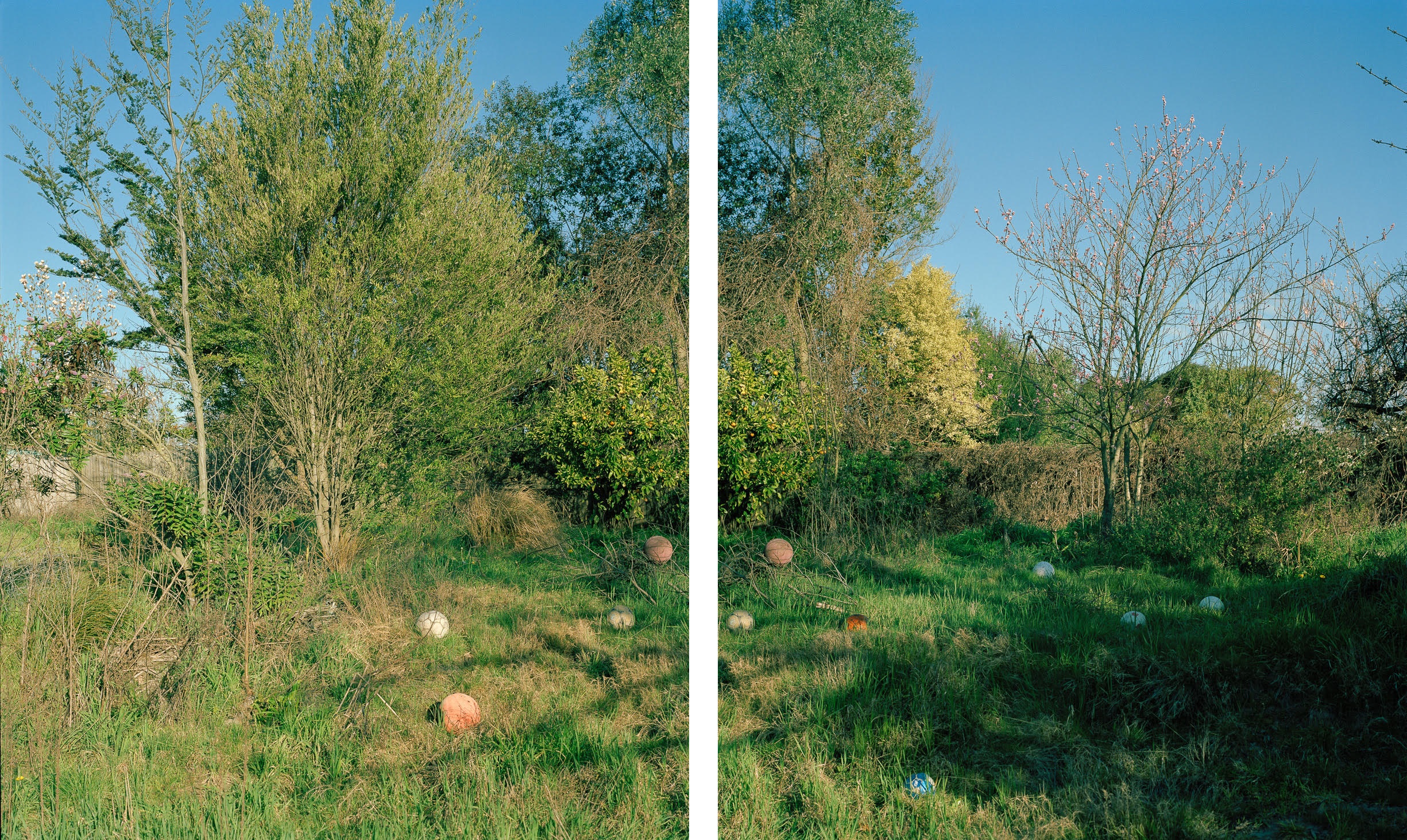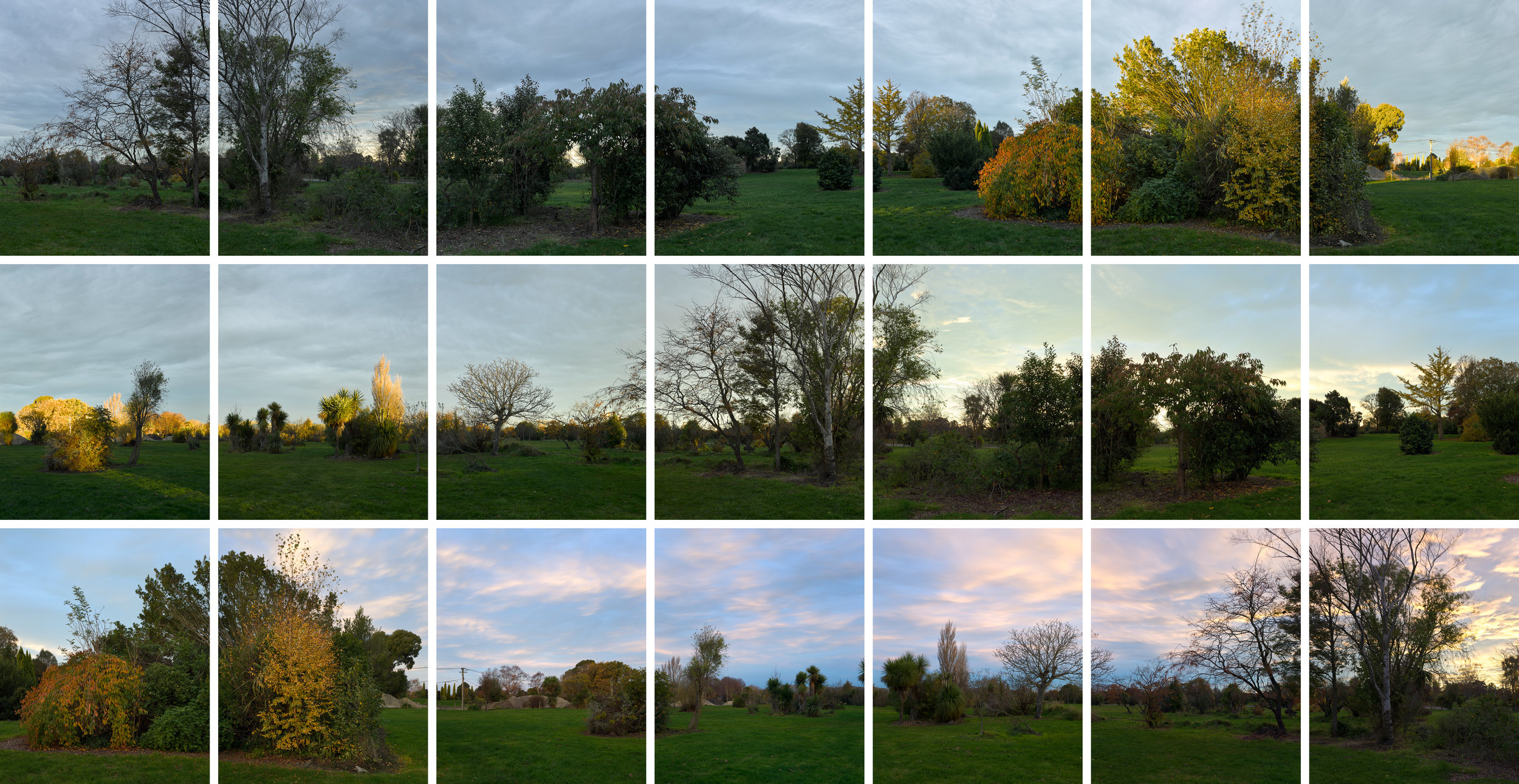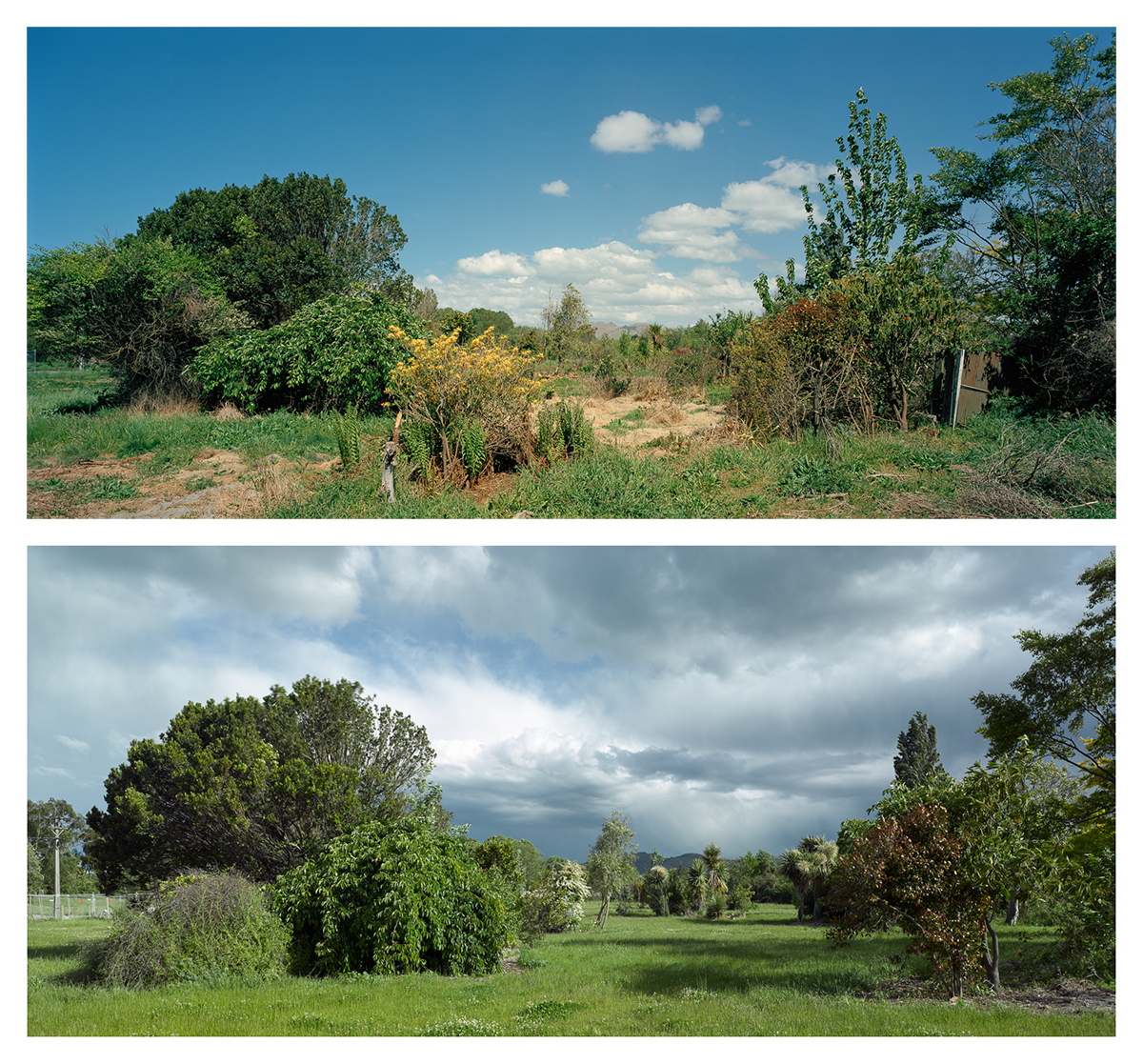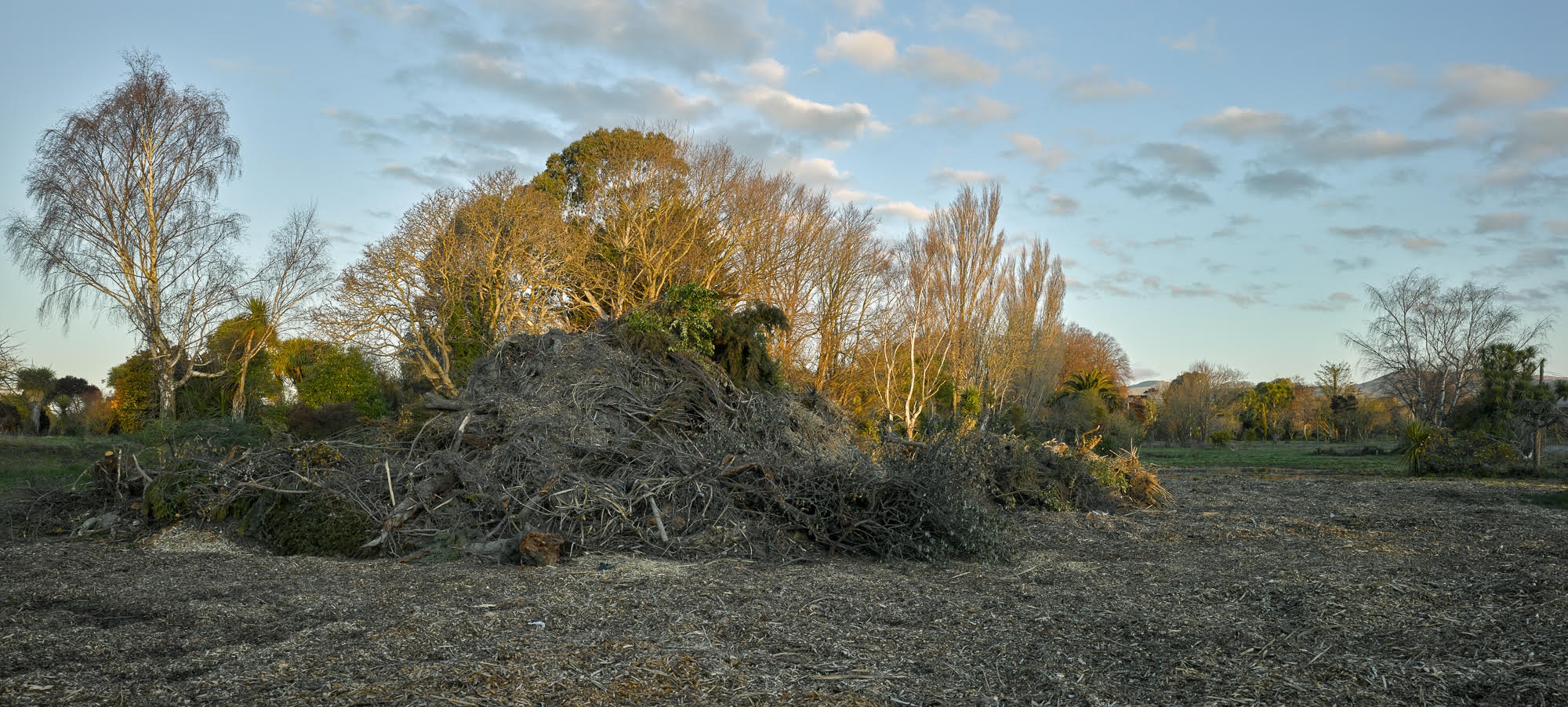Tim J. Veling reviewed - June 2018
Vestiges
Tim J. Veling
CoCA Christchurch
31 May - 29 July 2018
Reviewed by Sally Blundell for PhotoForum
Halley Place, Avonside, 2015, autumn and 2016, spring, during a nor-west wind.
On a midwinter day in the Christchurch suburb of Avonside the only sound is that of blackbirds, ducks, the soft murmur of the papango or scaup. There is little wind to ruffle the bare branches. Ōtākaro /the Avon River slinks brown and muddy towards the estuary. Here, in a long wide serpentine wedge of land, the residential red zone is the calm after the tectonic storm.
The Canterbury earthquakes of September 2010 and February 2011 wreaked havoc in these eastern suburbs. Houses rattled, roads tilted, bridges twisted, riverbanks subsided and unseemly torrents of liquefaction were disgorged from under the once orderly infrastructure of the city. Street names that once described the appeal of these riverside suburbs now gave truth to their boggy, wetland nature: Avonside Drive, River Rd, Estuary Rd. In the following months, the new Government-run Canterbury Recovery Earthquake Authority (CERA) imposed a colour coded zoning system on the city: green – good to live in; orange – not sure; white – assess rockfall risk; and, red – those areas damaged beyond “practical and timely repair”.
Across the residential red zone 7857 properties were earmarked for demolition, giving residents a chance, CERA explained, to “move forward with their lives”.[1] Over the following years all but a handful of the houses disappeared, leaving behind a disconcerting cityscape of park-like lawns, abandoned gardens and stands of indigenous trees and shrubs.
Tim J. Veling, senior lecturer in photography at the University of Canterbury School of Fine Arts, has been drawn to this depopulated landscape for a number of years. He is a key contributor to Place in Time: The Christchurch Documentary Project and in 2013 worked with photographers Glenn Busch and Bridgit Anderson on Thx 4 the Memories (2011-2013), a large, outdoor exhibition profiling the people and places of the residential red zone.
Following on from where Thx 4 the Memories left off, Vestiges documents five years in the red zoned suburb of Avonside. The large scale format of many of these works, and the use of 360 and 720 degree panoramas, many presented as diptychs, triptychs or groups of multitude prints, provide an immersive and evocative experience of this stretch of riverside land. But there is too a formal sensibility at play here. The use of light, the shadowed background of the Port Hills, the deep proscenium of trees, the dramatic arc of the Canterbury sky – all evoke the traditions and techniques of the romantic landscape painter, the ruins and relics of classical architecture here translated into overgrown gardens and the intimate vestiges of the title – the blue scrawl of a tag, a scattering of basketballs, a road cone, wire fencing. Glimpsed through the undergrowth or strewn across the gentle beauty of the natural environment, these fragments hold the chaotic history of the last eight years: the earthquakes, the social and political inequities of a Government-mandated emergency response, the inevitable grief of leaving homes and neighbourhoods. As outlined in the new draft plan for the red zone by Crown-Council joint enterprise Regenerate Christchurch, further change is imminent, but in documenting this evacuated landscape Veling forces a necessary pause in the proceedings, using the slow and natural passage of days and seasons to allow space and time for necessary processes of remembrance.
Memory will not be rushed here. In revisiting the same streets over the years (although “street” is a mutable word in this context), we witness the slow movement of seasonal change: the reddening leaves of an oak tree, the pale frenzy of a cabbage tree in flower, branches gusted by a spring nor-wester. The sense of melancholy is pervasive, the scrappy edges of former gardens are redolent with loss, but within the slow changes of the natural environment there is too a note of expectancy for a new re-populated future.
Writing on memory and landscape, Jacky Bowring, professor of landscape architecture at Lincoln University, says disasters “present a challenge to remembering the lives lost and the prior condition of the landscape, the intimate attachments to places now gone and even the event itself.” [2] In Vestiges, Veling meets that challenge with a haunting but understated record of an environment becalmed between a tumultuous past and a sense of new beginnings.
Banks Avenue, Richmond/Avonside, 360 degree panorama.
[1] – Canterbury Earthquake Recovery Authority, “Residential Red Zone Offer Recovery Plan”, July, 2015
[2] – Jacky Bowring, “Post-disaster Landscapes”, Landscape Review, 14(2)
Sally Blundell is an arts writer based in Christchurch. She is a senior journalist at the NZ Listener and a regular contributor to books and art journals.




